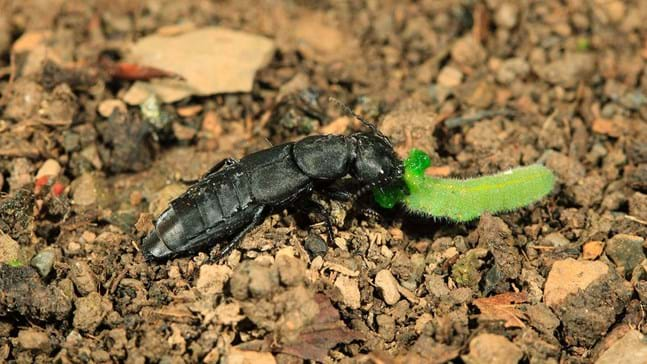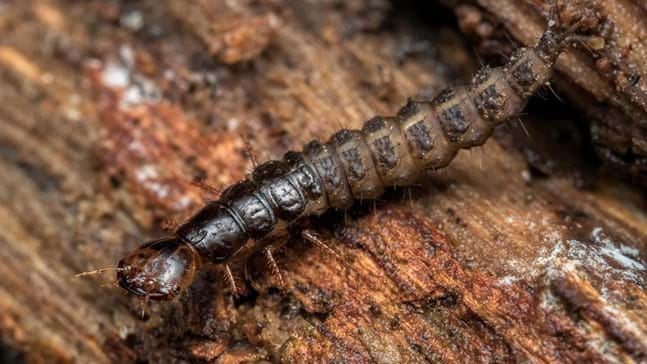
Credit: Dave Bevan / Alamy Stock Photo
What do devil's coach horse beetles eat?
Powerful predators of the insect world, the devil’s coach horse feeds on a range of invertebrates. Worms, slugs, caterpillars, spiders and woodlice are all among the prey taken. Fast moving, the beetle uses its powerful jaws to catch prey on the ground. The species is capable of flying, but is rarely seen in the air.





